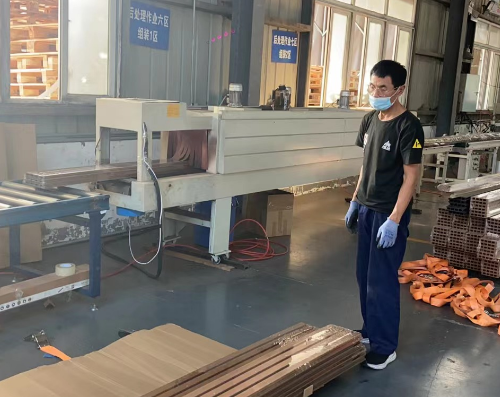
In an era where environmental sustainability is paramount, the use of Wood-Plastic Composite (WPC) has emerged as a promising solution for eco-conscious consumers and industries alike. From its manufacturing process to its end-of-life disposal, WPC offers numerous environmental benefits that make it a preferred choice in the realm of green building materials.
Sustainable Sourcing:
One of the key environmental advantages of WPC lies in its utilization of recycled materials. The wood fibers used in WPC are often sourced from wood waste, such as sawdust, wood chips, and offcuts from lumber production. By repurposing these materials, WPC helps reduce the demand for virgin timber, thereby conserving forests and minimizing deforestation.
transform high standards
productivate next-generation
Reduced Resource Consumption:
Compared to traditional wood products, the production of WPC consumes fewer natural resources and generates less waste. The incorporation of recycled plastics further reduces the reliance on petroleum-based polymers and diverts plastic waste from landfills and oceans. This resource-efficient approach contributes to the conservation of valuable resources and helps mitigate the environmental impact of manufacturing processes.
Longevity and Durability:
WPC’s exceptional durability and longevity also play a significant role in environmental protection. Unlike natural wood, WPC is highly resistant to moisture, decay, and insect damage, prolonging its lifespan and reducing the need for frequent replacements. By choosing WPC materials for outdoor decking, fencing, and furniture, consumers can minimize the consumption of raw materials and decrease the environmental footprint associated with maintenance and replacement cycles.
Recyclability and Circular Economy:
Furthermore, WPC is inherently recyclable at the end of its life cycle. Rather than ending up in landfills, WPC products can be recycled and repurposed into new materials or components, contributing to a circular economy model. This closed-loop approach minimizes waste generation and conserves resources, aligning with the principles of sustainable development and environmental stewardship.
In conclusion, Wood-Plastic Composite (WPC) represents a sustainable choice for environmental protection across its entire life cycle. By promoting resource efficiency, reducing waste, and embracing recyclability, WPC embodies the principles of sustainability and offers a viable pathway towards a greener future.



